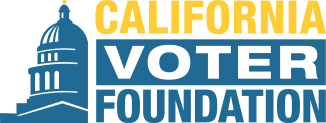Excerpt:
This coming November, every one of California’s more than 20 million registered voters may receive a ballot in the mail — whether they ask for one or not. In fact, many election administrators and advocates say it’s inevitable.
“It’s not a question of ‘if,’ said Kim Alexander, the president of the California Voter Foundation. “But ‘how.’”
California is already ahead of the curve when it comes to voting from home. In the March primary election, 75% of voters got a ballot in their mailbox. But the exigencies of social distancing are putting pressure on state lawmakers to round that up to 100%, ensuring that every registered voter has the option to cast a ballot without having to physically crowd into a polling place.
A bill from Palo Alto Democratic Assemblyman Marc Berman would ensure just that. But with most state legislators sheltering in place until at least early May, all eyes are on the governor who, with an executive order, could make the upcoming election an all-mail affair.
Earlier this month, Joe Holland, president of the California Association of Clerks and Election Officials and top election official in Santa Barbara County, sent Gov. Gavin Newsom a letter requesting that he ink a new edict, declaring the November contest an “all-mail ballot election.”
Even if mass gatherings are permitted in November — something Newsom says is unlikely — county election officials say time is of the essence. Ballots have to be ordered, voter rolls assembled, polling places secured.
“The consensus for November 2020 is that California is going to go all vote-by-mail — and we should. We don’t want to have a Wisconsin debacle,” Holland said, referring to the April 7 presidential primary where some voters reported waiting in line for five hours. Since then at least three dozen voters and polling workers in Wisconsin have tested positive for COVID-19.
The governor’s press office has not responded to a request for comment about prospects for a California all vote-by-mail election.
Even an “all-mail” election in California isn’t quite what it sounds like — it wouldn’t really be without a brick-and-mortar option. For those who need some extra help exercising their right to vote, state law requires counties to set up a certain number of in-person polling places.
Through Holland, the association also asked Newsom to grant them the authority to radically scale back that requirement. And therein lies the current rub.
Some advocates warn that an insufficient number of drop-off sites and vote centers could leave many voters — particularly those from underrepresented demographic groups — either unable to vote or stuck in long lines at the few remaining in-person locations.
“Waiving the state’s in-person voting standards will potentially disenfranchise tens, if not hundreds, of thousands of California voters,” union president Bob Schoonover, whose chapter of the Service Employees International Union represents tens of thousands of public sector workers across Southern California, wrote in a letter to Secretary of State Alex Padilla earlier this month. (full story)

